10.4: Policing, Colonialism, and Slavery
- Last updated
- Save as PDF
- Page ID
- 143347
- Ulysses Acevedo & Kay Fischer
Origins of Policing
Most of us are told that the police exist to maintain safety by keeping the “bad guys” off our streets. This narrative is often reinforced through mainstream media, including the news and TV shows that actually often “exaggerate the amount of serious crime and the nature of what most police officers actually do all day” (Vitale, 2017, p. 34). Professor of Sociology and Coordinator of the Policing and Social Justice Project at Brooklyn College and CUNY Graduate Center, Alex S. Vitale wrote in his book, The End of Policing (2017), that in reality, crime control is a very small part of policing work. He cited David Bayley, a veteran police scholar who argued that police in fact do not prevent crime, and that is one of the best kept secrets of our society. Bayley (1996) writes,
Experts know it, the police know it, but the public does not know it. Yet the police pretend that they are society’s best defense against crime and continually argue that if they are given more resources…they will be able to protect communities against crime. This is a myth” (Vitale, 2017, p. 35).
Vitali argues that the police work to maintain their legitimacy to the public and that politicians on both sides of the aisle support legitimizing police work. For example, when the shootings of unarmed Black men began to get some media coverage, the overall reaction by mainstream Democrats was to call for police reform, which Vitale argues is a way of restoring legitimacy for the police. This point of view that the issue of racist policing can be addressed by firing a few “bad apples” from our “unbiased system of law enforcement” and that through training, we can create better policing, completely ignores that ultimately the basic functions of police have never been about public safety. It also ignores the function of white supremacy and its impact on policing.
Vitale (2017) points out how the origins of policing stem from three racialized and classed systems of inequality: slavery, colonialism, and controlling the working class (2017, p. 36). Police forces grew in size and legitimacy largely in response to various revolts and social movements that challenged existing systems of exploitation, creating what Allan Silver (1976) called a “policed society” (p. 37). Mark Neocleous, professor of Social and Political Sciences at Brunel University London, wrote that the police exist to “fabricate social order” yet that “order” is rooted in a system of exploitation. If those with the most power feel that the system they’re benefiting from is under attack (for example slave revolts, general strikes, and rioting), the police are there to control these activities (p. 37). Vitale concludes,
Therefore, while the specific forms that policing takes have changed as the nature of inequality and the forms of resistance to it have shifted over time, the basic function of managing the poor, foreign, and nonwhite on behalf of a system of economic and political inequality remains (p. 37).
Additionally, author, organizer, and activist, Andrea J. Ritchie writes that generally people have “exceedingly low” awareness of violence against women of color, stating, “The history I learned in school rarely mentioned Indigenous women’s experiences of colonial violence, Black women’s encounters with slave patrols and Jim Crow policing, or immigrant women’s experiences with policing at and beyond the border” (2017, p. 19). Ritchie asserts that the earliest example of policing in the U.S. came in the form of military violence in which indigenous women and children were indiscriminately violated against to further projects of settler colonialism. This section will also include an analysis of how the origins of policing impacted women of color and immigrant women.
Worker and Immigrant Suppression
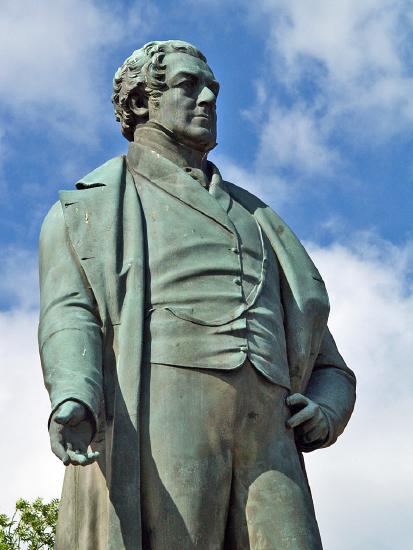
The first formalized police force was the London Metropolitan Police founded in 1829 by Sir Robert Peel. The purpose for this force wasn’t to “fight crime,” but more about “managing disorder and protecting the propertied classes from the rabble” (Vitale, 2017, p. 37). In fact, Peel developed his policing ideas while participating in the British colonial occupation of Ireland. From its inception, policing was about social control to protect those in power against “growing insurrections, riots, and political uprisings” (p. 37). Peel noticed that with the armed occupying forces in Ireland, they dealt with resistance by firing into the crowds and creating martyrs. This would only agitate further resistance by the Irish. Peel instead offered a more “legitimate” force of policing called the Peace Preservation Force who would try to prevent disruption by infiltrating “rebellious localities” and pinpoint “troublemakers” to arrest or intimidate.
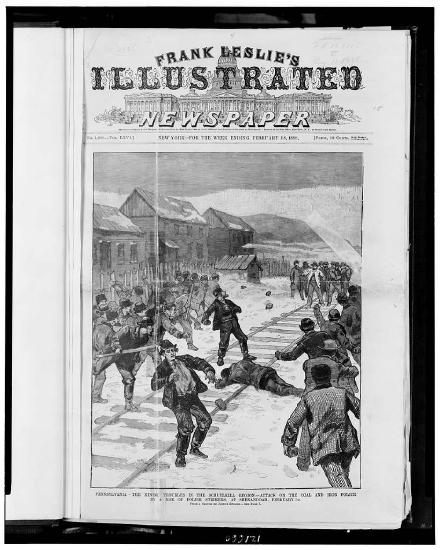
Illus. in: Frank Leslie's illustrated newspaper, v. 66, 1888 Feb. 18, p. 1. (Public Domain; Joseph Becker via Library of Congress)
In the U.S. police forces were created in the North East to suppress workers’ movements and strikes, largely led by poor and immigrant workers. Industrialization and immigration influxes from Europe created social and political upheavals in the early 19th century, and Boston for example, wanted a police force to “to manage riots and the widespread social disorder associated with the working classes” (p. 39). Police were used to deal with workers’ strikes, riots, and suppress militant unionism. Privatized police forces backed by state legislation were used to break strikes, such as the Coal and Iron Police of Pennsylvania. The Coal and Iron Police killed 19 mine workers and wounded dozens in the Lattimer Massacre of 1897. The workers were on strike, protesting very dangerous working conditions and unpaid overtime.
Worker and immigrant suppression was also about controlling a largely poor, Catholic, militant immigrant population that were seen as socially inferior by elite protestants in Boston, New York and Chicago. “Morality laws” restricted drinking, gambling, prostitution, and even dress codes for women, giving more opportunities for police forces to disrupt their lives.
Colonial Police Forces
As early policing in cities was rampant with corruption, it was common for police to be used as “a tool of political parties to suppress opposition voting and spy on and suppress workers’ organizations, meetings, and strikes” (Vitale, 2017, p. 41). Soon, reformers called out the corruption and policing was professionalized through exams, training, and centralized hiring. A reformer by the name of August Vollmer developed police science courses, introduced fingerprinting and police labs. He got his ideas from participating in the U.S. occupation of the Philippines, which became a U.S. colony after the Spanish-American War in 1898. This transition wasn’t smooth, however, as revolutionary Filipinxs led by Emilio Aguinaldo, had been resisting the 400-year reign of the Spanish on their lands, and weren’t about to concede their homes to another colonizer. Filipinx resisters battled the U.S. for over three years in the Philippine-American War.
Unfortunately, the Philippines became a testing ground for new policing methods as U.S. occupation forces monitored anticolonial activities, suppressed demonstrations, and used agent provocateurs to “sow dissent” and arrest leaders and agitators (p. 43). The first state police force, the Pennsylvania State Police of 1905, were in fact modeled after the Philippine Constabulary used to maintain U.S. control. Other methods like militarized espionage and political suppression were also brought from the Philippines to be used on miners and factory workers.
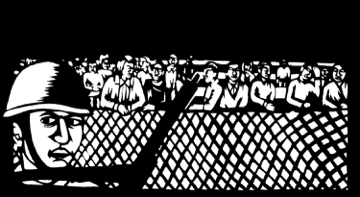
Washington, D.C. was also intimately involved in creating or influencing other colonial police forces throughout the globe. They sent weapons to and trained military officers in Central America and the Caribbean in order to support US-backed regimes. These U.S.-trained security forces committed “horrific human rights abuses, including torture, extortion, kidnapping, and mass murder” (Vitale, 2017, p. 44). The U.S. also set up forces in Japan, South Korea, and South Vietnam to support their objectives such as using intelligence to quell rebellions. Many who served in these militarized police forces in other countries went on to teach police science or influence policing in the U.S.
In the case of Nicaragua, military forces backing the repressive Somoza family dictatorship received training at the U.S. Army’s School of the Americas in Panama, with origins in the U.S.’s Cold War policy of containment against the spread of communism. Course topics ranged from surveillance to counterinsurgency techniques and interrogation methods. Many of their graduates have participated in military coups and human rights abuses throughout Latin America, alleging that “subversives” needed to be removed for national security. But these so-called subversives could include student groups, union leaders, religious activists and farmers and ultimately led to severely repressive and violent state-sponsored terrorism against civilians (Moulton, 2016, pp. 1373 - 1374).
Death squads conducted mass murders in El Salvador. By 1980, Salvadorians had faced decades of coups, dictatorships, mass land theft, and economic insecurity, including the mass slaughter of 30,000 Pipil Indians in 1932 by U.S.-backed General Maximiliano Hernández Martínez. When the people demonstrated against the government for being left landless and jobless, death squads responded with mass killings. This included the assassination of Archbishop Oscar Romero and later rape and murder of four American Catholic nuns. Instead of denouncing the government of El Salvador, the Bush and Reagan administrations rewarded the country with $3.7 billion in aid, 70% of which was used for weapons and war assistance (Gonzalez, 2001, pp. 133 - 135).
Colonialism and Violence Against Indigenous Women
When examining what Ritchie (2017) names “enduring legacies” of police violence, she starts with colonialism and that “the earliest manifestations of policing in the United States took the form of military violence” during the systemic seizer of land, genocide, and removal of tens of millions of indigenous populations. Citing work by Native American Studies author and professor, Roxanne Dunbar-Ortiz, Ritchie points out that colonial armies and settlers didn’t differentiate treatment of women from men, nor children from adults.
In the 1630s, Puritan settlers began a war against the Pequot people of what’s now called Connecticut, “entering Indigenous villages and killing women and children or taking them hostage” (Dunbar-Ortiz, 2014, p. 62). Another mercenary, John Mason, led soldiers to attack a fort occupied by only women, children, and old men, and “Slaughter ensued” (p. 62). After killing Pequot fighters, they set fire to structures and burned the survivors alive.
Upon setting their sights on discovering gold in California, the government supported settler-colonists in their extermination efforts against Native Americans in the state. The Daily Alta California wrote in 1849: “Whites are becoming impressed with the belief that it will be absolutely necessary to exterminate the savages before they can labor much longer in the mines with security” (Blakemore, 2020). White settlers were legally allowed to enslave California Natives, take custody of Native children and convict them for crimes and subject them to convict-labor. In 1851, California’s first governor, Peter Hardenman Burnett, used state money to pay and arm militias to kill thousands of Native Americans, including women and children.
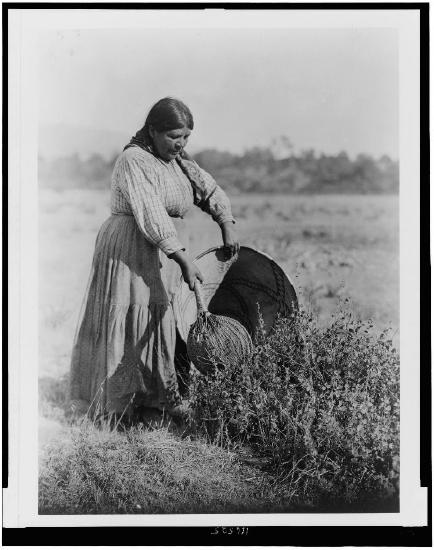
Blakemore (2020) also noted that large massacres in California wiped out entire tribal populations, for example the slaying of 400 Pomo people, again, including women and children by the U.S. Cavalry and volunteers at Clear Lake. It’s estimated that 100,000 Native Americans died in the first two years of the Gold Rush and that the state spent $1.7 million to murder California Natives.
The mass killings and policing of Native Americans transitioned from armies to police forces, with the “explicit goal of targeting Indigenous peoples” (Ritchie, 2017, p. 24). As the “controlling narrative” of Native Americans was that they were “inherently dangerous and violent,” criminal, immoral, promiscuous, lazy, and drunk, such framing justified their criminalization (p. 25). For example, in 1850 the state of California passed a law that legalized removal of California Indians from their land and “indenturing children and adults to Whites” (Johnston-Dodds, 2002, p. 5). This legalized whites to claim Native children for labor, essentially authorizing one to have control over a child’s earning until they were eighteen. The Act also legalized the auctioning of any jobless Native American labeled a vagrant, making the Native person essentially an indentured servant of any white person who paid their fines.
Texas Rangers - A Western Expansionist Police Force
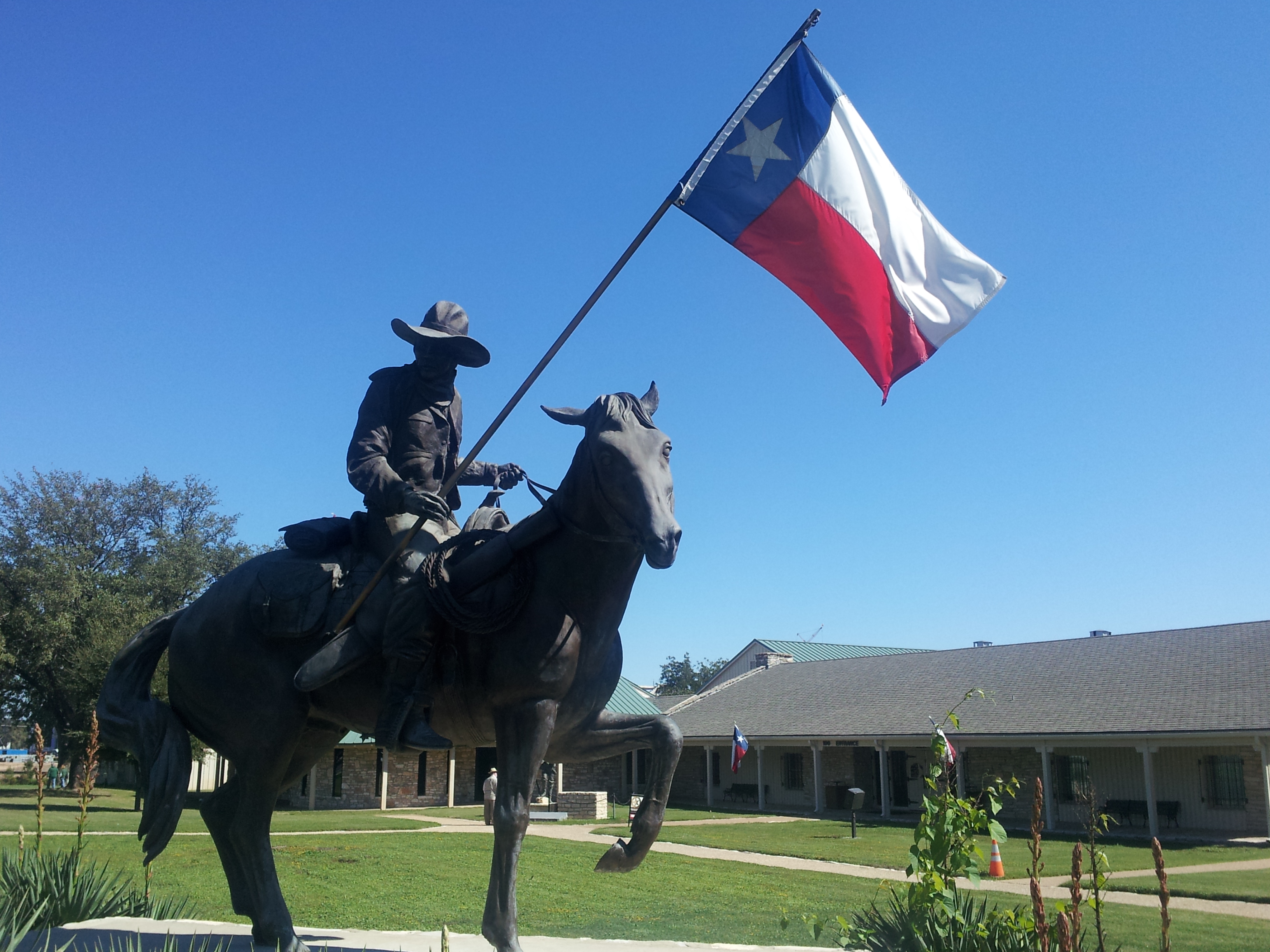
The U.S. also has our own examples of colonial policing on the domestic front. Tejana/o/xs found themselves to be subject to second-class status at the conclusion of the U.S.-Mexico War and the signing of the Treaty of Guadalupe Hidalgo in 1848. Upon the discovery of gold in California and in accordance with the doctrine of Manifest Destiny, over half of Mexico was taken over by the United States, including the state of Texas. In fact, Anglos had already taken over parts of Texas by 1836, making it a state in 1845 (Martinez, 2009). For Mexicans who ended up north of the new border, their lands and political power were taken away, they were segregated in Mexican American barrios, and were concentrated in low-paying industrial, service, or agricultural work.
The U.S. established the Texas Rangers in order to “protect the interests of newly arriving white colonists, first under the Mexican government, later under an independent Republic of Texas, and finally as part of the state of Texas” (Vitale, 2017, p. 45). Their objective was to “hunt down native populations” who white settlers claimed attacked them and accused of stealing cattle. However, it was white settlers who would steal cattle from Mexican rangers, and when the vaqueros attempted to take them back, that’s when whites would call on the Rangers and accuse Mexican Americans of stealing. Essentially the Texas Rangers acted as “a major force for white colonial expansion pushing out Mexicans through violence, intimidation, and political interference” (p.45). For example, if any Native American or Mexican American person resisted the Rangers, they might have been killed, beaten, or arrested. They were so ruthless that Vitale cited Texas author, Mike Cox, who described the Rangers’ intent on driving out or killing the entire Native population of Texas an “extermination campaign” (2008).
In another example of mass violence, the Rangers killed fifteen unarmed residents at the 1918 massacre of Porvenir, Texas. The rest of the community fled to the south of the border. The state legislative hearings about these extrajudicial killings resulted in no formal charges and the records were sealed for fifty years in order “to avoid any stain on the Rangers’ ‘heroic’ record” (Vitale, 2017, p. 45). The Rangers were often written as heroes in the press, where the killing of Mexicans they named as “bandits and outlaws” were celebrated. This praise of anti-Mexican violence continued to be “a model for American policing” into the 20th and 21st centuries, and the 1935 book on the Rangers by Walter Webb even inspired “generations of films and novels iconizing the Rangers, culminating in the 1990's television series, Walker, Texas Ranger, starring right-wing martial-arts expert Chuck Norris” (pp. 46 - 47).
Into the 20th century, the Mexican American and Chicanx communities of Texas experienced “Juan Crow,” much like Jim Crow segregation and discriminatory practices of the Southeast. They were excluded from certain hotels, restaurants, public pools, and bathrooms. Chicanx residents who tried to vote were met with intimidation by local police, including the Texas Rangers. In Crystal City in 1963, Rangers were used to suppress voter rallies and Chicanx candidates for city council were assaulted and arrested. The Texas Ranger were also used to interrupt the Chicano Movement in Texas, including the farmworkers movement through tactics like intimidation, arrests, and beating protestors (Vitale, 2017, p. 46).
The Slave Patrol
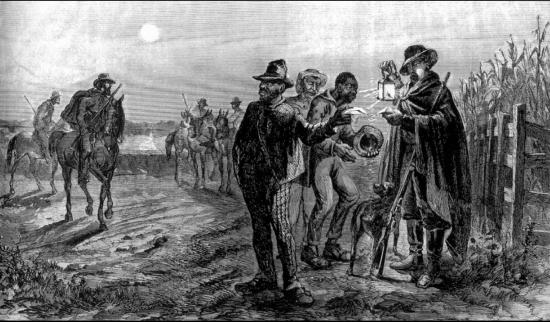
Alex Vitale also wrote that, “slavery was another major force that shaped early US policing” (2017, p. 47). Policing in the South has roots in slave patrols which were organized to reinforce racist restrictions on enslaved African American populations in the 18th and 19th centuries and to make sure they were suppressing slave rebellions. Slave patrols were allowed to visit plantations and search the premises, making sure that slaves weren’t hiding weapons or fugitives, meeting together, or learning how to read or write. Slave patrols also worked to prevent runaway slaves from crossing into the North (Vitale, 2017; James, 2009). Jessica James calls the slave patrol among the first organized and race-based methods of social control in the U.S. Many of these patrols were originally compulsory state militia called “musters,” and patrol duty was shared across the classes, as some patrol captains owned slaves (2009, pp. 748-749).
For enslaved women, they were often subjected to “plantation justice,” including sexual violence and rape, which were never considered a crime under slave codes (Ritchie, 2017, pp. 26 - 28). Angela Y. Davis (1981) wrote that “Slavery relied as much on routine sexual abuse as it relied on the whip and the lash….Sexual coercion was, rather, an essential dimension of the social relations between slavemaster and slave” (as cited in Ritchie, 2017. Pp. 27 - 28). For Black women, they were also subject to sexual assault if a slave patrol entered their home during a search.
The Charleston City Guard and Watch emerged from slave patrols and was professionalized in 1783. By the mid-1800s, Charleston had 100 City Guards and sixty State Guards who patrolled enslaved people who worked off the plantation property in the industrial era warehouses or workshops. These “unaccompanied” slaves who moved around the city freely with the potential to meet with free Blacks created anxiety among whites, so the City Guards were “deemed essential” (Vitale, 2017, p. 47). Consequently, the entire Black population ended up being surveilled or monitored by armed police, who would typically harass any Black person, demanding to inspect their passes from employers or documents proving they were free.
James (2009) explained that African Americans sometimes resisted by creating warning systems and pretending to be innocent or unknowing when caught. Some even rubbed cow manure on their feet to throw off their scent when dogs were used to track runaway slaves. Others used more force, for example using ropes to trip the patrollers’ horses or by throwing hot coals. Although patrols were typically not allowed to kill an enslaved person, since they were considered “property,” in these encounters both patrollers and the enslaved might end up dead.
When slavery was abolished, rural towns also transitioned from slave patrols to professionalized policing to deal with the newly freed Black population. Black codes replaced slave codes and were used to control the movement of newly freed people, forcing African Americans into “subservient economic and political roles” (Vitale, 2017, p. 48). Laws against vagrancy were used to submit Blacks into accepting jobs in the sharecropping system and poll taxes were endorsed by the police. For Black women, this meant being subject to working as a domestic servant. If a Black resident didn't have any proof of employment, they would be arrested and subjected to slave labor through the convict leasing system and prison farms. Some sheriffs and judges even received “kickbacks” for arresting Black people and created lists of “hardworking blacks to be incarcerated on behalf of employers, who would then lease them out to perform forced labor for profit” (p. 48). If Black women were not performing “their natural duties as washerwomen and domestic servants,” they were subject to punishment (Haley, 2016, as cited in Ritchie, 2017, p. 30).
Furthermore, the Reconstruction era in the south falsely criminalized and targeted Black people to regulate and control this population. Black women were villainized in false newspaper headlines as monstress, crazy, biologically inclined to act “immoral” and deranged, allegedly killing their own children. Citing Patricia Hill Collin’s work on how Black women are racialized and gendered, Ritchie points out that Black women are simultaneously hypersexualized and masculinized, “thereby removing them from protective spheres” that are often granted automatically to white women. Ritchie continues, that portrayed as “subhuman, animalistic, to be violated, feared, and punished,” violence against Black women by the police is regularly accepted (2017, p. 36).
Soon Jim Crow segregation laws replaced the slave codes and Black codes from the early half of the 20th century. Ritchie (2017) informs us that there were many instances of police brutality cases against Black women during this era, both in the South and North. For example, the Civil Rights Congress filed a petition in 1951 presenting hundreds of cases between 1945-1951 proving genocide against African Americans as a people under the 1948 Convention on the Preventing and Punishment of the Crime of Genocide. Mrs. Lena Thomas was beaten by the police who were called after she got into an argument with a food checker in Harlem. She successfully sued the New York Police Department for $10,000 in damages (pp. 31-32). There were also instances of rape and sexual assault by police, such as in 1946 when Nannie Strayhold accepted a ride home from two police officers in Virginia and was instead driven to a deserted area and raped by at gunpoint. Women who were actively protesting Jim Crow were “singled out for particularly violent police abuse” such as the case of three women from the US Women’s Army Corps who were brutally beaten at a Kentucky bus terminal for sitting in a white section when the “colored” section was full (p. 33). Or how in 1942, years before Rosa Parks, Ella Ree Jones was violently beaten and threatened, then thrown into jail by her hair for refusing to give up her seat to a white man (pp. 33 - 34). Ritchie cites Angela Y. Davis’s research which reported how police regularly raped Black women activists who were arrested for their participation in the Civil Rights Movement. In fact, in 1964, Fannie Lou Hamer famously testified on national television about how she was assaulted by the police when under arrest, beaten and stripped naked (p. 35).
At the height of the Jim Crow era, policing became, “a central tool of maintaining racial inequality throughout the South, supplemented by ad hoc vigilantes such as the Ku Klux Klan (KKK), which often worked closely with - and was populated by - local police” (Vitale, 2017, p. 49). James wrote that in the end,
Southern police officers adopted methods used by slave patrollers, such as enforcing curfews and vagrancy laws targeted at African Americans. These practices endured well into the 20th century, and terms used during slave patrols, such as walking the beat and patrolling, have become commonplace in American parlance (2009, p. 749).
Immigration Enforcement
Ritchie (2017) reviews the policies and practices set in order to police the migration of women of color, focusing on how especially women who were considered indecent or undesirable were restricted entry. For example, the first law to restrict migration by race and gender was the Page Act of 1875 which barred Asian women on the presumption that they were prostitutes (p. 38). Immigration laws also banned “homosexuals” or anyone perceived to be sexually deviant, such as the case of Sarah Harb Quiroz, a Mexican mother and US permanent resident who was denied entry at the US-Mexico border in 1960 because of her short hair cut and for wearing pants. She was deported to Mexico, “confirming that immigration enforcement was to operate as if there was no place in the United States for gender or sexual nonconformity, as gender and sexual norms were defined by whiteness” (p. 38). Women of color who were perceived to breed too many children also faced exclusion, such as how in 1920 Japanese women, the wives of Japanese immigrant men, were prevented from entering the U.S. under the idea that they bore too many children which was seen as a threat of Japanese conquest of the west (p. 39).
Chinese women were regularly surveilled under the belief that they were all prostitutes and “purveyors of disease and immorality” which threatened the ideals of the white family. Chinese and Mexican brothels in San Francisco were regularly targeted by the police and if anyone was found to be participating in sex work within three years of entrance to the US, they could be legally deported. Ritchie wrote, “...controlling narratives of immigrant women as importers of vice, disease, and uncontrolled reproduction were mobilized to justify state violence” (2017, p. 39). Asian women were profiled as immoral, hypersexual, and subservient, and Latina/xs were presented as hotblooded, promiscuous, gang members or thieves. Immigrant women of color’s motherhood were also “portrayed as a threat to the nation’s safety net” (p. 40). And more recently, Haitian, Arab, Muslim, and South Asian immigrant women have also been devised as a threat to the U.S. and as a result Ritchie argues that “these archetypal representations play out in police interactions” (p. 40).

